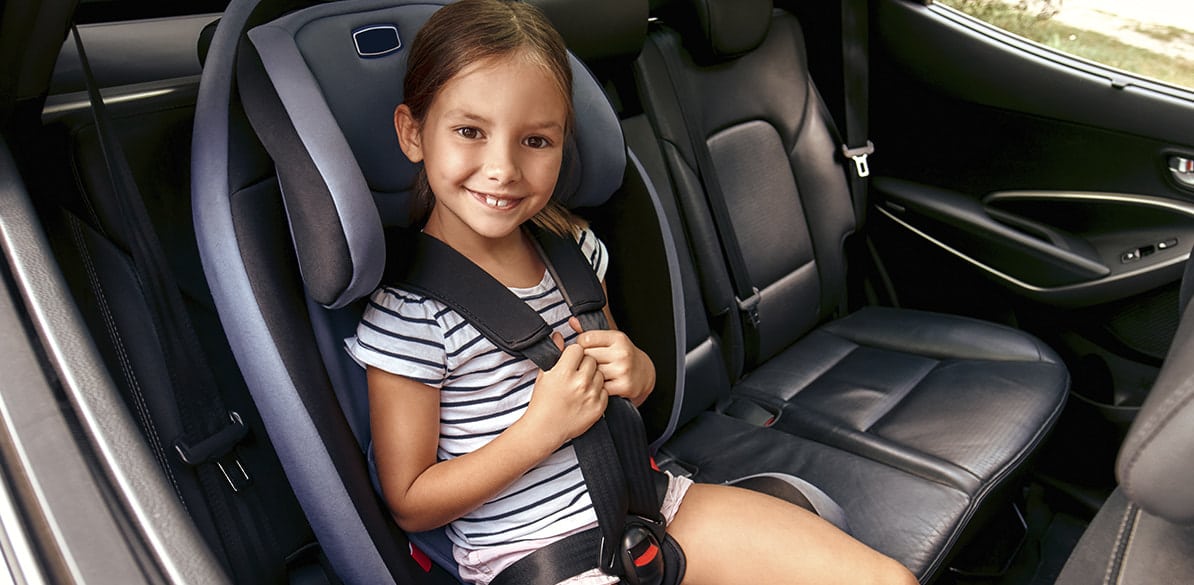The fourth anchor point
We analyze its usefulness and how it contributes to our safety

Road Safety
To begin with, we must define what the fourth anchor point is. It is a guide on the abdominal part of the belt that is attached to a booster with backrest and is located at the front of the pelvis (as if it were a buckle). It works very simply, we have to pass the lap part of the seat belt through the belt guide before fastening the buckle of the car’s seat belt.
These devices have been incorporated into some boosters with backrests, mainly due to the application of Regulation 129.
Why have these devices been introduced, are they useful, and do they improve safety? We will now try to answer all these questions as clearly as possible.
First, let’s go back to early 2008. The fourth anchor point was incorporated at that time by one manufacturer (BRITAX) in the boosters with backrests that it sells in the USA. The main reason for doing this was the large increase in injuries among children between the ages of 6-8 years due to the improper positioning of the lap belt. The explanation is simple. At this age the femur is not long enough to allow the child to bend their leg over the car seat. What children do is move forward in the car seat so that they can do this and be in a more comfortable position. And therein lies the problem. When they do this, they shift the lap belt from their pelvis to their abdomen, where it is not designed to be.
In view of this, the fourth anchor point acts to prevent what could be called “static submarining“. The poor positioning of the child in the seat as a result of their search for greater comfort.
However, is this the reason that brands are incorporating the fourth anchor point to boosters with backrest on a massive scale? Well, probably not. It is Regulation 129 that can answer this question.
Regulation 129 incorporates next-generation dummies for its impact tests: the so-called Q family. These dummies offer many advantages, but also some disadvantages, because the Q family in the tests has very rigid “behavior” in the spine and this causes an effect called “chin to chest”. This effect is the contact of the chin with the dummy’s chest. When this effect appears, which is almost always the case, the acceleration values of the head soar, meaning the booster no longer meets the requirements of the regulations.
A recent study presented at the Munich 2022 Child Safety Conference on the chin-to-chest effect in Q dummies, by Dinos Visvikis, states, “The prevalence of the chin-to-chest effect in the real world and its effect on child injury potential, if any, does not appear to have been reported.”
This effect, therefore, seems to be specific to dummies and does not have an equivalent in children. And what is the relationship between this effect and the fourth point? Quite simply, one of the most effective ways to reduce the chin-to-chest effect is by installing a fourth anchor point. The widespread use of this system is designed to reduce the “chin to chest” effect on the dummy and, therefore, to comply with Regulation 129.
In summary, the fourth anchor point does improve the position of certain children, mainly those between 6 and 8 years of age, in the event of a possible collision.
Another common question is whether the fourth anchor point could damage the pelvis, but we have not found any studies that can clarify this point.
No injuries to the pelvis caused by the fourth anchor point have been reported, nor has the chin-on-chest effect, which is seen in the crash-test dummies.
So its use in R129 products is more closely linked to regulatory compliance than to the initial intentions of incorporating the fourth anchor point.
